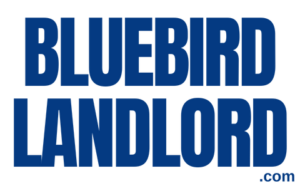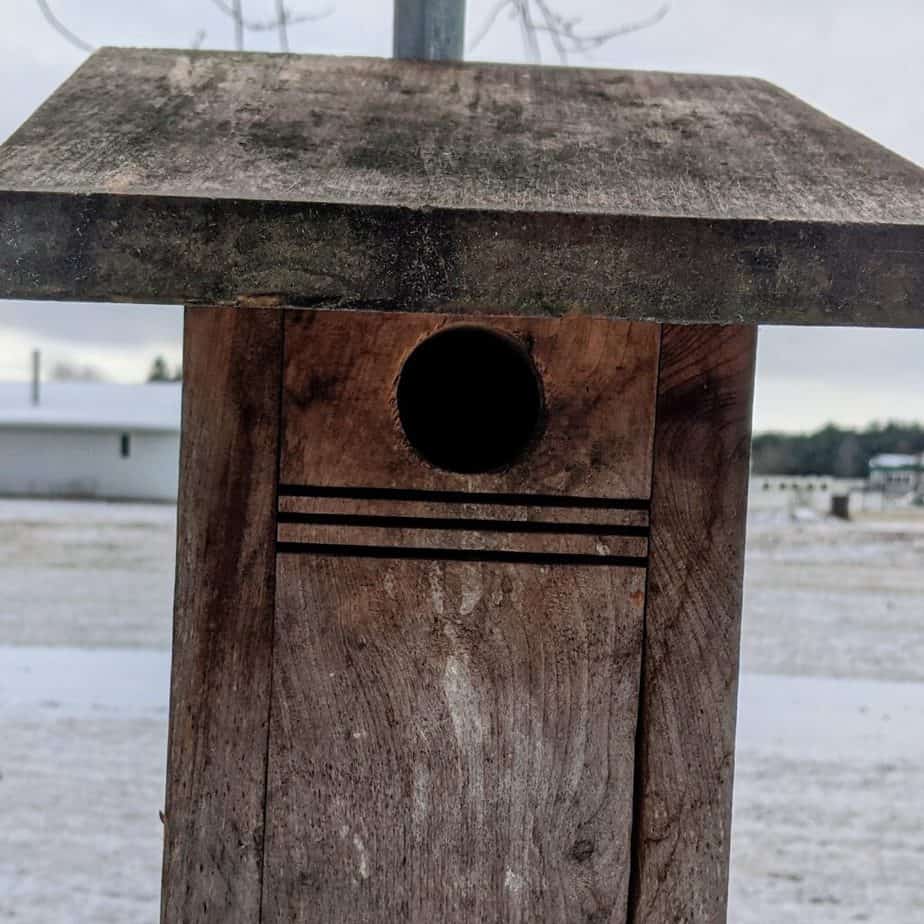
Whether you are buying a new bluebird house or building your own, you’ll need to know a few things about the proper entrance hole size for bluebird houses. The “entrance hole” refers to the opening, usually on the front of the nest box, where bluebirds enter the box.
There are three species of bluebirds in North America and they each require a specific size of entrance hole to be able to use a nest box. If you make the hole too small, it will stop bluebirds from entering, but if the hole is too large it will allow European starlings to enter and compete with the smaller bluebirds for the nest box.
So, what is the proper entrance hole size for bluebird houses?
Entrance holes should be 1 1/2 inches in diameter for Eastern Bluebirds and 1 9/16 inches for Western and Mountain Bluebirds. A round entrance of this size allows bluebirds to enter while excluding European Starlings, an invasive species of birds that compete heavily with bluebirds for nesting sites.
While a round entrance hole is the most common option, you can also have a nest box with an oval-shaped entrance hole, or one with a horizontal slot entrance. These types of entrance hole styles each have their own size considerations.
The table below shows you the proper entrance hole size for bluebirds based on the shape of entrance hole you are considering.
Proper Entrance Hole Size for Bluebird Houses
| Bluebird Species | Circular Entrance Hole | Oval Entrance Hole | Horizontal Slot Entrance |
|---|---|---|---|
| Eastern Bluebirds | 1 1/2 inches | 2 1/4″ tall x 1 3/8″ wide | 1 1/8 inches |
| Western Bluebirds | 1 9/16 inches | 2 1/4″ tall x 1 3/8″ wide | 1 3/16 inches |
| Mountain Bluebirds | 1 9/16 inches | 2 1/4″ tall x 1 3/8″ wide | 1 3/16 inches |
Best Nest Box: My all-time favorite nest box for bluebirds is the Nature’s Way model CWH4. It has so many features that I love. Get one of these bird houses on Amazon here.
The Three Most Common Styles of Entrance Holes for Bluebird Houses
Circular Entrance Hole

Oval Entrance Hole
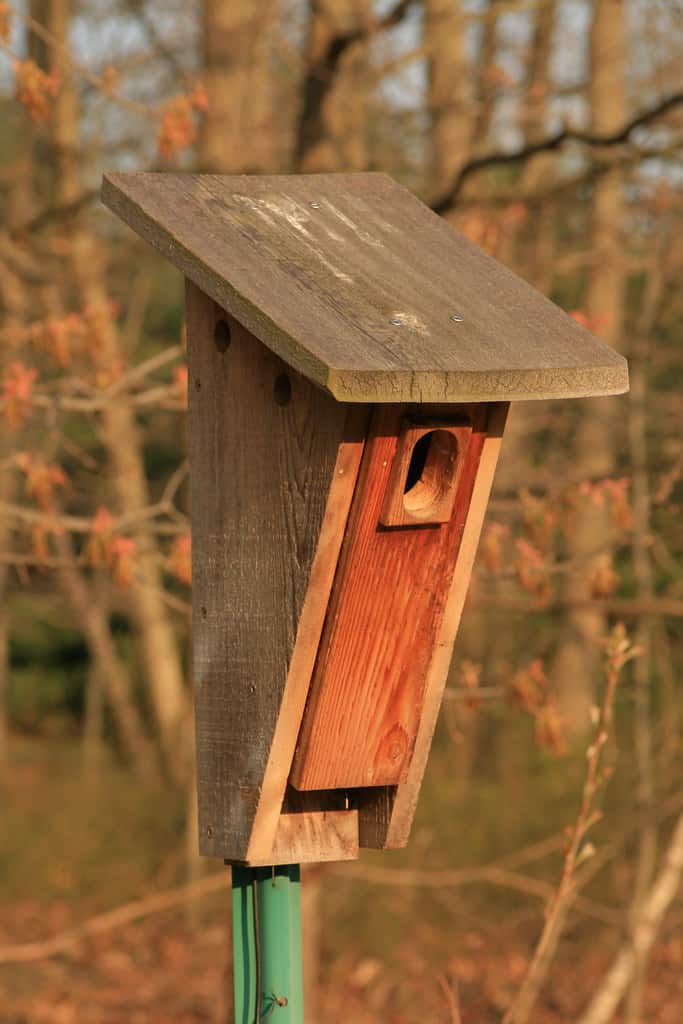
Horizontal Slot Entrance

If you want to attract bluebirds to your yard THIS YEAR, the best place to start is the Bluebird Landlord Audio Guide. In this audio guide, I’ll tell you everything you need to know about attracting bluebirds in just 59 minutes and 38 seconds.
Check out the Bluebird Landlord Audio Guide here.
What’s the Right Entrance Hole Size for Eastern Bluebirds?
Even though eastern bluebirds weigh more on average than the other two species of bluebirds (up to 32 grams for an adult), they actually have the smallest wingspan, of up to 12.6 inches (source). This contributes to their ability to fit inside of slightly smaller entrance holes than the other two species of bluebirds who have wingspans of up to 14 inches.
Essentially, eastern bluebirds need one of the following types of entrance holes:
- A circular entrance hole that is 1 1/2 inches in diameter
- An oval entrance hole that is 2 1/4 inches tall by 1 3/8 inches wide, or
- A horizontal slot entrance that is 1 1/8 inches in height.
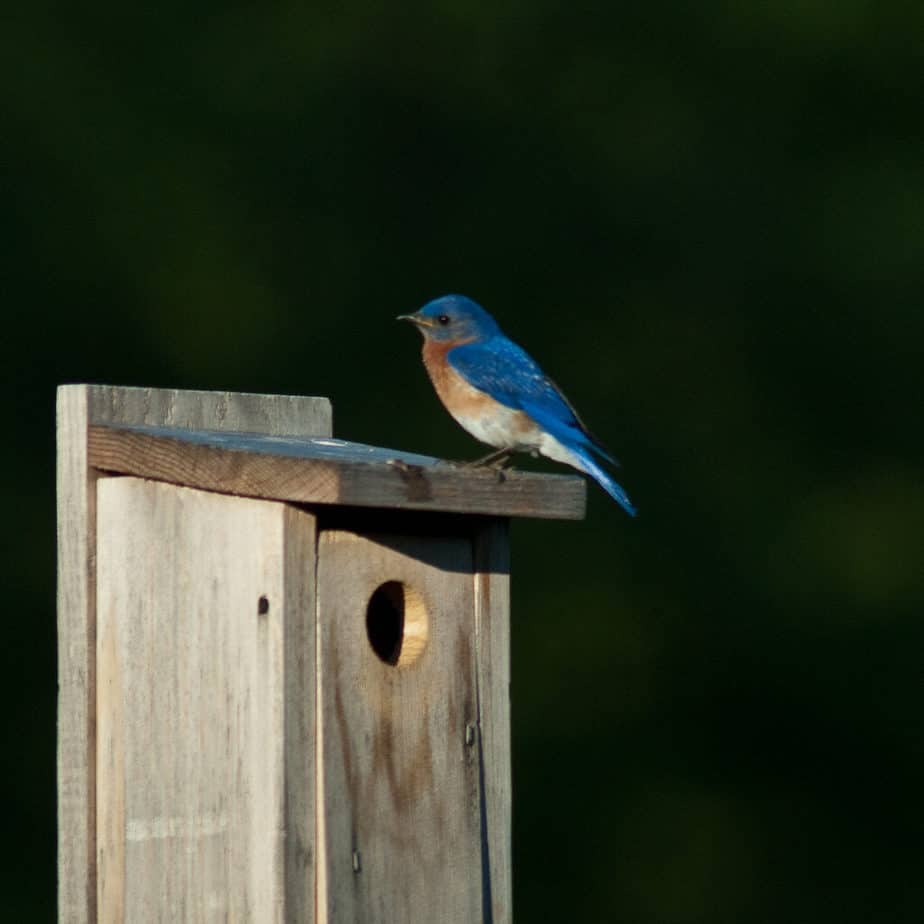
Photo by nosha, license: CC BY-SA 2.0
If you’re purchasing a nest box for eastern bluebirds, check that the entrance hole meets one of the above specifications before you buy it. On my recommended tools page, I wrote about two great bluebird houses that I recommend. Click here to see those.
Note: There is a little wiggle room to have a larger entrance hole for eastern bluebirds on circular and slot style entrances. Make sure that a circular entrance hole is no larger than 1 3/16 inches in diameter and a slot entrance is no larger than 1 3/16 inches tall. Entrance holes any bigger than this will allow entry to European starlings.
What’s the Correct Entrance Hole Size for Western and Mountain Bluebirds?
I recommend using the same size entrance hole for western bluebirds and mountain bluebirds. Although the two birds are slightly different sizes, they do well in the same size nest box.
For both western bluebirds and mountain bluebirds, choose one of the following sizes of entrance hole:
- A circular entrance hole that is 1 3/16 inches in diameter
- An oval entrance hole that is 2 1/4 inches tall by 1 3/8 inches wide, or
- A horizontal slot entrance that is 1 3/16 inches in height.
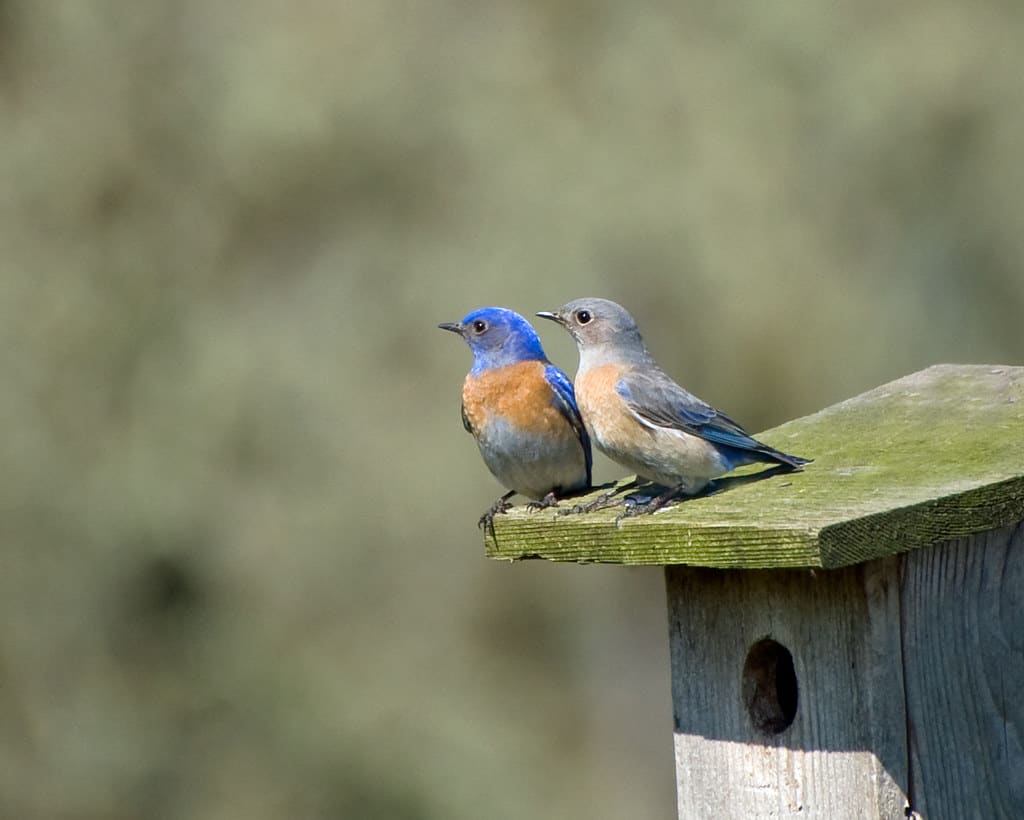
Photo by USFWS Pacific, license: CC BY-NC 2.0
If you purchase or build a nest box for western or mountain bluebirds, stick to the above specifications. If the entrance hole is any larger that what is suggested above, it will be too big and European starlings may be able to enter.
What Size Entrance Hole Should I Use Where Two or More Bluebird Species Overlap?
In areas of North America where multiple species of bluebirds overlap, be generous and choose the larger entrance hole size. This will allow all species of bluebirds to successfully access your nest box. In overlapping areas, choose these entrance hole sizes:
- A 1 3/8 inch circular entrance hole
- A 2 1/4 inch x 1 3/8 inch oval entrance hole
- A 1 3/16 inch horizontal slot entrance
Where Do The Three Bluebird Species Overlap?
Historically, mountain bluebirds and western bluebirds have overlapped in the western United States and Canadian provinces from the Rocky Mountains to the west coast.
Mountain Bluebird Range
See below how the year-round mountain bluebird territory (shown in green) stretches west from the Rocky Mountains:

Credit: rbrausse, license: CC BY-SA 3.0
Western Bluebird Range
The western bluebird’s year-round territory (shown in green) also stretches west from the Rocky Mountains, overlapping in certain areas with the mountain bluebird.

Credit: rbrausse, license: CC BY-SA 3.0
Eastern Bluebird Range
Eastern bluebirds typically end their territory at the Rocky Mountains, not overlapping much with the other species. But, as you can see in green below, there is some overlap in small regions as well.

Credit: rbrausse, license: CC BY-SA 3.0
In summary, anyone in the American Southwest or west of the Rockies should choose the larger entrance hole sizes mentioned in the table above. It’s possible that multiple species of bluebirds may overlap in your region, and you don’t want to exclude the larger western and mountain bluebirds from using your nest boxes.
Is There an Entrance Hole Size That Deters House Sparrows?
Any circular entrance hole that is 1 1/4 inches or smaller will be effective at keeping out house sparrows. Unfortunately, this size will also keep bluebirds from using the same nest box. The sad reality is that, since house sparrows are smaller than bluebirds, sparrows cannot easily be deterred from using a bluebird house based on the entrance hole size alone.

Photo by ibm4381, license: CC BY 2.0
There are, however, multiple bluebird nest box styles that have been invented with the hopes of deterring house sparrows.
Bluebird Houses That Discourage House Sparrows
Each of the following styles of bluebird houses were invented to be attractive to bluebirds, but to have some feature that is unattractive to house sparrows:
For example, the Gilbertson Bluebird House uses PVC pipe, a cylinder-shaped nest box, and a smaller nesting cavity to discourage house sparrows. (You can get your own Gilbertson bluebird house on amazon here.)
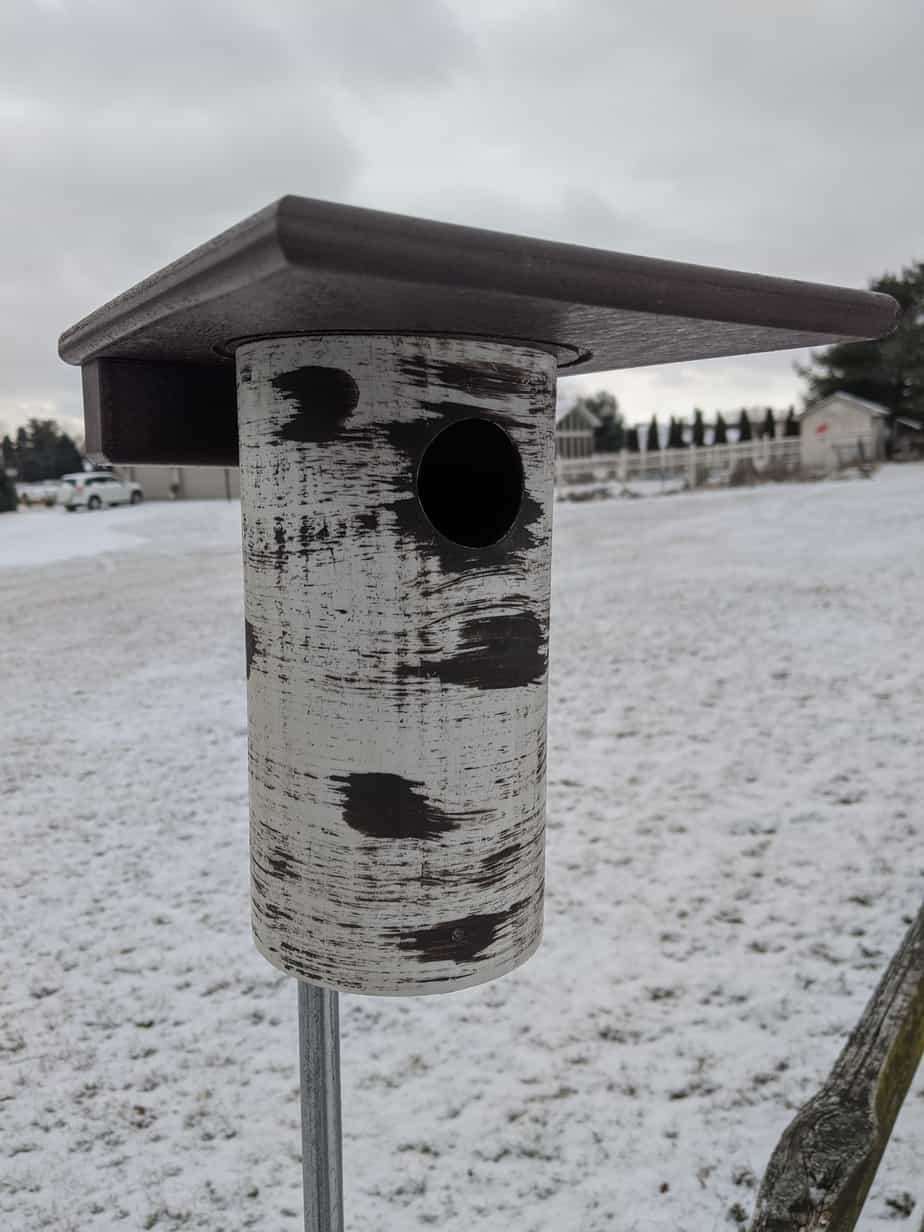
As a different example, the Troyer Bluebird House uses a horizontal slot entrance and allows extra light into the box. Some people believe that this box style is effective at discouraging house sparrows as well. (See this box on PurpleMartinProducts.com)

Even though the design of these bluebird houses might discourage house sparrows, or if they are be labeled as “house-sparrow-resistant,” this cannot be due to the entrance hole size alone. Any entrance hole that bluebirds can enter, sparrows can enter too. So, the best thing to do as a bluebird landlord is to actively monitor your nest boxes and remove house sparrow nests.
Can Starlings Enter Through Oval Entrance Holes?

Oval entrance holes are popular in nest box designs such as the Peterson Bluebird House and the Gilwood Bluebird House. These boxes have become widely used in eastern bluebird territory because of a few studies showing that eastern bluebirds prefer oval entrance holes (source). According to these studies, it’s likely that a bluebird will choose an oval entrance hole over a circular hole if given the choice. But, European starlings can also enter through the oval entrance holes that are standard on these bluebird houses.

Photo by John Brandauer, license: CC BY-NC-ND 2.0
The trick with these boxes is that they must be designed in a way so that starlings will not choose to use them. For example, the Peterson nest box is built to have a smaller, angled cavity. Since, starlings prefer a much larger nest cavity, they rarely will choose this nest box, even though they can fit inside the entrance hole.
So, if you choose to go with an oval entrance hole, make sure you pick a good design, like a Peterson nest box, which is made to deter starlings. Click this link to view plans for building your own Peterson style nest box.
Conclusion
To summarize this article, since the three species of bluebirds are slightly different sizes, they will require different entrance hole sizes for bluebird houses. When building or buying a bluebird house, make sure you consider the size of the entrance hole.
Eastern bluebirds will need a 1 1/2 inch circular entrance hole, while western and mountain bluebirds will need a 1 9/16 inch round hole. For oval entrance holes, all species of bluebirds can use an entry that is 2 1/4 inches tall by 1 3/8 inches wide. For a horizontal slot entrance, choose a 1 1/8 inch slot for eastern bluebirds and a 1 3/16 inch slot for western and mountain bluebirds.
Click here to view my Recommended Bluebird Houses page. On this page I show my top two recommended bluebird houses and why I recommend them.
Note to New Bluebird Landlords
I’ve learned a lot about bluebirds over the years and I want to share that knowledge with you. If you want to attract and care for bluebirds in your own back yard, click START HERE to read the other articles that I’ve written for you.
